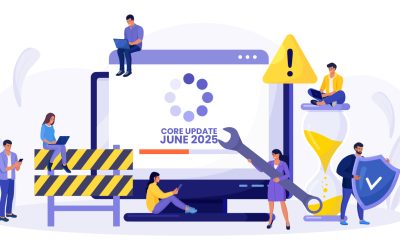Healthcare digital marketing relies a lot on the success of the desktop and mobile website and apps of a hospital, specialist care center, or physician clinic. Once the website is created, content needs to be updated regularly. Not only that, the site needs to be constantly monitored for results. And that can get tricky and overwhelming, particularly if doctors handle the SEO and website development of their own site. The services of a healthcare digital marketing agency can be helpful here. There are also smart tools around such as Google Lighthouse.
The Lighthouse Chrome Extension has since recently been featuring SEO Audits too. As you’d probably remember, the Lighthouse tool only had features such as accessibility, performance and progressive web app. Now, with the SEO Audit feature, webmasters and SEOs can carry out some basic SEO checkup for their websites.
If you’ve used Lighthouse, you’d know that it runs locally in the Chrome browser. The SEO audits can be run in a staging environment or on live pages – public pages as well as pages requiring authentication.
Running Lighthouse Reports
The Lighthouse SEO audits can be run through the Lighthouse Chrome extension or through the Chrome Canary developer tools. Here’s how you do it through Lighthouse Chrome extension:
- You need to first install the Lighthouse extension.
- In the extension bar, select Lighthouse by clicking on the icon.
- Then, select the audit options you want from the options menu.
- Then click Generate Report.
After the auditing is complete, the report opens up in a new window.
Here’s how to do it through Chrome developer tools:
- Head to Chrome developer tools
- Select Audit
- Select “Perform an Audit”
- Select “SEO” for the SEO Audit
- Click “Run”
Effectiveness of Google Lighthouse
Before using any tool, you need to have a clear picture of what it offers. Is the Lighthouse really something that can guide you in making your website more powerful, user-friendly, SEO-friendly, and highly converting? How effective is the Google Lighthouse tool?
The Lighthouse tool currently tests the following factors:
- Web Performance
- Progressive Web App (PWA)
- Best Practices
- Accessibility
- Search Engine Optimization (SEO)
One way to understand the value or effectiveness of Google Lighthouse is to compare it with other tools. One of these tools is PageSpeed Insights. But there are significant differences between both these tools.
Why Lighthouse Scores Better
PageSpeed Insights and Lighthouse produce different scores for site speed, because the former has certain limitations:
- PageSpeed Insights earlier never used to consider real world metrics for page speed such as page weight, time to first byte, speed index, etc. and instead scored mobile and desktop content on the basis of best practices and individual factors. Now, according to the Chrome User Experience Report (CrUX),PageSpeed Insights has been updated so that real world scores are incorporated but only for websites at the top 3 million. Hence, for the average webmaster or website owner, it doesn’t do much good.
- PageSpeed Insights also does not offer real time scores for site speed or up-to-date recommendations since it isn’t based on the current best practices for web development. External links without rel=”noopener” or HTTP/2 are not considered. And there are other aspects left out too. By contrast, Lighthouse provides more updated technical recommendations as well as real time scores for site speed.
As a result of the actions and technical issues it points out, Lighthouse is more useful as a technical tool.
Some of the Advanced and Detailed Reports by Lighthouse
Let’s have a look at some of the detailed reports provided by Lighthouse.
Performance Report
Here’s an example of the Performance report:
As you can see above, there are parameters such as First Meaningful Paint which measures when a page’s primary content is visible. The First Interactive parameter measures the time during which the page is in a minimally interactive stage. The Consistently Interactive parameter refers to when the page is in a fully interactive stage.
There are also other factors such as Perceptual Speed Index, which indicates how fast a page gets populated with content, and the Estimated Input Latency which indicates in milliseconds the time it takes for your app to respond to inputs from the user.
These really are critical and minute details that are important for the ultimate user experience which you want your website and app to offer your readers.
Opportunities
Lighthouse also highlights the issues that are holding back your website from performing to its best capability and attaining a higher Performance score.
The actions mentioned in the aforementioned screenshot have been described in a prioritized manner, based on their impact on a page’s performance. That gives you a clear picture of the factors that will have the highest impact on your page performance. These are vital since Google has announced that its page speed ranking algorithm will move from desktop to mobile content by July 2018. That certainly is a wakeup call to get your mobile site sorted. The Lighthouse tools can tell you how. Any parameter in the red must be improved upon.
SEO Audit
However, Lighthouse’s SEO Audit leaves a lot to be desired. Things are pretty basic. While your meta tags’ quality is checked, that isn’t a sufficient indication of SEO best practice.
For identifying and sorting meta tag issues, particularly issues on mobile website versions, you’ll find better tools out there. But since this is the initial release for SEO audits on Lighthouse, you can expect more features to be added in the future. There are some useful checks though, such as the one called “Document uses legible font sizes”. This really helps improve your mobile website’s quality. Mobile users must be able to see the content on the mobile pages clearly. A font size that gets below 16px is extremely hard to read, and so users would need to zoom in to read it. That’s not ideal.
In any case, the Lighthouse tool by Google has a lot of parameters with which you can measure the speed and performance of your mobile and desktop website pages and app. Lighthouse should be a vital element of your technical and mobile SEO audits.
Professional SEO companies rely on such smart tools for effective healthcare digital marketing.




